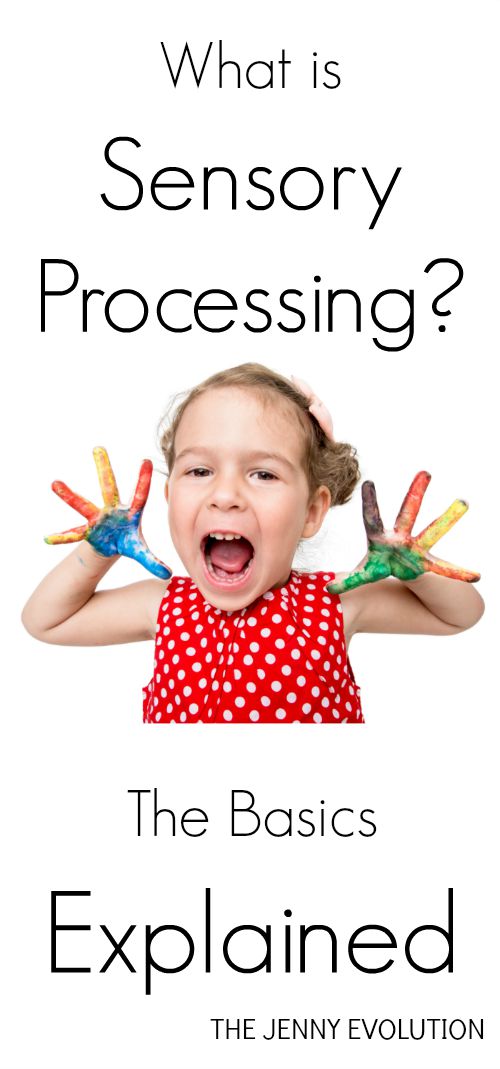What is Sensory Processing: The Basics Explained
As the mom of a kiddo with Sensory Processing Disorder, I still fumble sometimes on that “elevator speech” about how you describe SPD.
I’ve finally gotten it down to – “Sensory Processing Disorder is when a child’s body misreads the sensory signals he’s getting, often overreacting or under reacting to his surroundings.”
Usually the conversation branches out from there.
The fact is many people just don’t understand the foundation of what sensory processing is.
Today, I’m welcoming Natasha Daniels, a child therapist and author of the upcoming book How to Parent an Anxious Toddler (affiliate link), to explain the basics of just what sensory processing is.

What is sensory processing?
What is sensory processing?
In my world of child therapy and blog writing – I have made an incorrect assumption that everyone knows and understands sensory processing issues.
I am reminded weekly in my therapy sessions with parents that this is not the case and that parents often feel lost and confused around this topic.
For those parents I work with and all the parents out there in the sea of confusion – I have written this for you!
Here are the basics broken down.
Sensory processing has to do with how children take in their world through their senses.
Children on the Autistic spectrum or those that have anxiety are more prone to having sensory processing issues, but anyone can have these struggles.
An emotionally sensitive child can be more physically sensitive as well.
Children can be too sensitive (hypersensitivities) or not sensitive enough (hyposensitivities).
BUNMO Super Sensory Stretchy Strings – Calming & Textured Monkey Stretch Noodles hand2mind Sensory Fidget Tubes – Calming Toys for Kids
hand2mind Sensory Fidget Tubes – Calming Toys for Kids Sensory Water Beads Toy for Kids
Sensory Water Beads Toy for Kids Nutty Toys Pop Tubes Sensory Toys – Fine Motor Skills
Nutty Toys Pop Tubes Sensory Toys – Fine Motor Skills
Many children have both of these issues – depending on what sensory input you are talking about.
Sensory Processing Basics Broken Down

TOUCH (fancy word: Tactile defensiveness)
Some children feel more than other children.
They feel those sock seams, those tags, those boo boos and tight shoes more than other children. They can’t wear certain clothes and tend to not like jeans.
They are more sensitive to the temperature of their body, their food and their bath water.
They are more sensitive about combing, washing and styling their hair.
MOUTH (fancy word: Oral)
This can be quite a scary and debilitating issue.
Some children are overly sensitive to the taste, texture and pressure of foods in their mouth.
They might gag when having mixed textures (e.g. yogurt with fruit in it) or only want to eat bland foods.
They may not like the feel of food in their mouth.
On the opposite end of the spectrum, some children need to keep their mouths constantly stimulated and like to chew on everything and anything around them.
Sensory Chew Necklaces for Kids Munchables Dino Skull Sensory Chew Necklace
Munchables Dino Skull Sensory Chew Necklace Tilcare Chew Chew Sensory Necklace
Tilcare Chew Chew Sensory Necklace Tilcare Chew Chew Sensory Necklace
Tilcare Chew Chew Sensory Necklace
They might drool and stuff their food into their cheeks when they eat. They might chew on their shirts and on their toys.
SMELL (fancy word: Olfactory)
These children have – what I like to call – supersonic noses.
They can smell everything more intensely and often this is not a good thing.
They get overwhelmed with smells and might want to avoid restaurants or other environments where the smell is too pronounced.

HEARING (fancy word: Auditory processing)
Some children have supersonic hearing. They hear sounds louder than the rest of us.
These children will often cover their ears when the rest of us are just fine.
They get startled by noises and will often want to avoid loud places like fireworks, movies and concerts.
Even mundane noises like the vacuum, garbage disposal and dryer can cause distress for these children.
Super Z Outlet Liquid Motion Bubbler for Sensory Play BUNMO Pop Tubes Large
BUNMO Pop Tubes Large BUNMO Glitter Stretchy Strings – Calming Monkey Stretch Noodles
BUNMO Glitter Stretchy Strings – Calming Monkey Stretch Noodles YoYa Toys Pull, Stretch and Squeeze Stress Balls
YoYa Toys Pull, Stretch and Squeeze Stress Balls
MOVEMENT (fancy word: Proprioceptive dysfunction)
This category can be very confusing.
These children have a hard time planning where they are going (motor planning).
They can appear clumsy, accident prone and uncoordinated. They might have poor posture or seem “floppy.”
Some children might bump into things, play too hard with toys and want to wear tight clothing.

BALANCE/SENSE OF MOVEMENT (fancy word: Vestibular)
These children may not like to be hung upside down or to be spun around.
They may not like being backwards in cars or going on fast rides at amusement parks.
They might have weak stomachs and get motion sickness more often.
It is important to remember that these children truly feel these sensations more intensely than the rest of us and they need our patience and understanding.
Learning Resources Spike The Fine Motor Hedgehog Counting Dinosaurs Toys Matching Game with Sorting Bowls – Fine Motor Toy
Counting Dinosaurs Toys Matching Game with Sorting Bowls – Fine Motor Toy Melissa & Doug Primary Lacing Beads – Educational Toy With 30 Wooden Beads and 2 Laces
Melissa & Doug Primary Lacing Beads – Educational Toy With 30 Wooden Beads and 2 Laces Learning Resources Noodle Knockout! Fine Motor Game
Learning Resources Noodle Knockout! Fine Motor Game
This is by far not a comprehensive or detailed explanation of Sensory Processing Disorder. My hope is that this article will provide you with a quick explanation of a very common issue.
For more information on Sensory Processing Disorder visit The Sensory Spectrum or read more about Sensory Processing Disorder on Mommy Evolution!
About Natasha: Natasha Daniels is a child therapist and toddler mental health specialist. She obtained her post-graduate training at The Harris Institute for Infant Mental Health, but her three children have taught her the most valuable lessons!
Natasha splits her time between her private practice and her writing. You can read more from Natasha on her site Anxious Toddlers.
Find more articles and stories touching on special needs in the Voices of Special Needs series.

















Great breakdown and written in a really inclusive and empathetic way — THANKS!
Hi This is a great article, however I have to disagree with the Fancy Word for Hearing being “Auditory Processing”. Auditory Processing has nothing to do with whether or not a child can hear. Auditory processing refers to the way the brain processes auditory information.
Sorry just to add that my son had supersensitive hearing, yet has an Auditory Processing Disorder.
I found this article very informative as my son has been diagnosed with autism so i am trying to learn as much as i can so i know the best way to help him. And a lot of things that have confused me or made me wonder why he reacts or has a full on melt down with some things well you have answered a few of them just with this one article. Im 27 and have an 8 year old daughter too. And i never thought this would be something that i would ever need to know about. My son who is the one that is autistic is 4 now and he got his diagnosis at 2 and half he has taught me so much himself and is still teaching me now. But i am still struggling with some things even now and i have read loads. I should be an expert but sometimes I still feel like i know nothing. So i welcome any information that could help as i wanna give my son the easiest life i can thankyou.
As moms, we all become experts. But I don’t think the learning ever stops. My son is 9 and I’m still learning about his sensory stuff (as well as ADD and Dyslexia). Keep on pushing forward!
Also, I invite you to follow my other blog that focuses solely on Sensory Processing Disorder, which many kiddos with Autism also have. You can find it at http://www.thesensoryspectrum.com.
While this is a good article, I don’t feel it did a great job at addressing the “opposite” sides of each which are also included in sensory processing disorders. Usually, it is a child is hyper- or hypo- sensitive to each category and sometimes even mixed up across or within the categories (hyper-sensitive to sound but hypo-sensitive to touch). Some kids seek vestibular input and some avoid it to the max. Some kids won’t feel you touch their arm and some will think you hit them even if you lightly touched them.
I also found this article needing more on the ‘seeking’ side to be a well rounded introduction to SPD.
I will also ask, while I think your elevator speech is pretty good for an introductory sentence, please, please, say person instead of child. SPD is not something that you grow out of, and while people learn to better live with it, us SPD adults are definitely out there! If you would like an adult’s perspective on living with SPD, I recommend https://eatingoffplastic.wordpress.com/